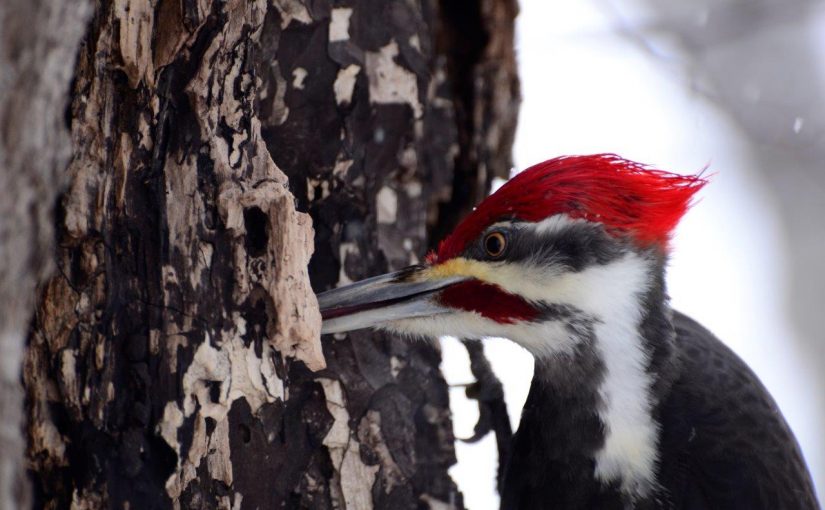Today’s post comes from Barb Rees, our Discovery Program and Marketing Specialist in the Northwest Zone of Ontario Parks.
Winter is a great time to watch for woodpeckers. Why? Simply because there are less leaves on trees making most birds more visible.
Typically, there are also more birdfeeders placed out in the winter than the summer (since the bears are hibernating). So attracting birds closer to your home makes bird-watching possible right from the warmth of your living room window.
So what brings woodpeckers nearby?
Suet and suet mixes will do the trick, but they will also go for other tasty treats like sunflower seeds, berries, nuts, and peanuts. Suet cakes can be bought at a variety of retail or birding supply stores, or you can even make your own homemade batch.
Want to get fancier?
You can find a lot of different homemade suet recipes to try online.
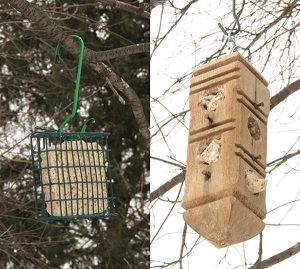
Add in some lard, peanut butter and an assortment of seeds, berries and cornmeal. Render down fat and drizzle it with the other items. Roll into a ball, flatten it into a rectangle or spice up a pine cone with the goodies.
Be sure to keep it fresh by storing it in the fridge or freezer until you need it, so that it doesn’t go bad. You can even turn this into a winter activity for the whole family and friends to try.
Once the treats are outside, sit back and wait for the various woodpeckers and other birds that you will entice to fly in to check it out.
Did you know that woodpeckers use their tails for support while eating?
If you watch closely, woodpeckers will wrap their stiff tail feathers around a smaller feeder or suet ball to provide them with more stability while they nibble away at the goodies.
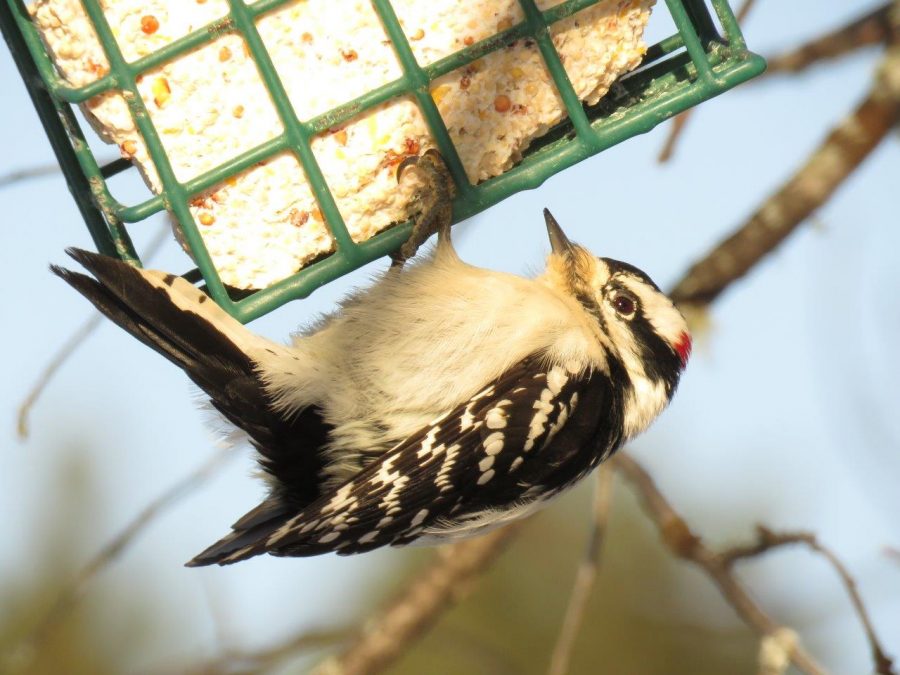
Be sure that your feeder is appropriately sized for the type of bird you’d like to attract. Store-bought suet cages can easily be modified by nailing a piece of longer wood to them to provide more tail support for larger birds.
What will I see?
Three common woodpecker species you might spot include:
- the Downy Woodpecker
- the Hairy Woodpecker
- the Pileated Woodpecker
(Ontario has several other species of woodpecker including the Sapsucker, Black-backed, Flicker, Three-toed and Red-bellied).
So how do I tell them apart?
For these three species, the size of the woodpecker is a great way to distinguish between them. The Downy is the smallest, the Pileated is the largest, and the Hairy is right in the middle.
It’s a bit tricky to tell the two smaller ones apart though, as their markings are quite similar. However, time and practice will help. Seeing them together on the suet or a tree makes it a lot easier too!
But how do I keep the names straight / which one is which bird?
A very simple way that I have discovered is by using the alphabet. The higher you go in the alphabet, the larger the bird.
- D = Downy, the smallest at about 15 cm (6”) or sparrow size
- H = Hairy, a bit larger at 23 cm (9”) or robin size
- P = Pileated, the largest at about crow size at 41-50 cm (16-20”)
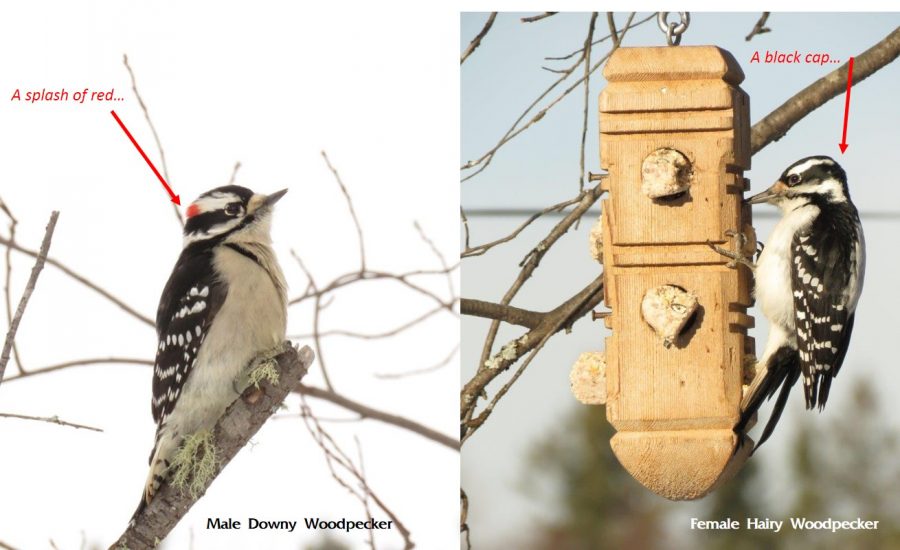
And telling males from females?
Well, it’s all about a splash of red.
For the Downy and Hairy Woodpeckers, the males will have a red patch at the back of their head and the females won’t.
Be careful with the juveniles though. While they are young they will all have a bit of a red crest on the top of their head until they mature.
With the Pileated Woodpeckers, both genders will sport a red cap on top, but the males’ will go fully across the top of the head (front to back) whereas the females will have a black forehead. A quick telltale sign for this species: be sure to look for the red chin strap or “mustache.” If the red chin marking is there, it’s a male. If it’s black, it’s a female.
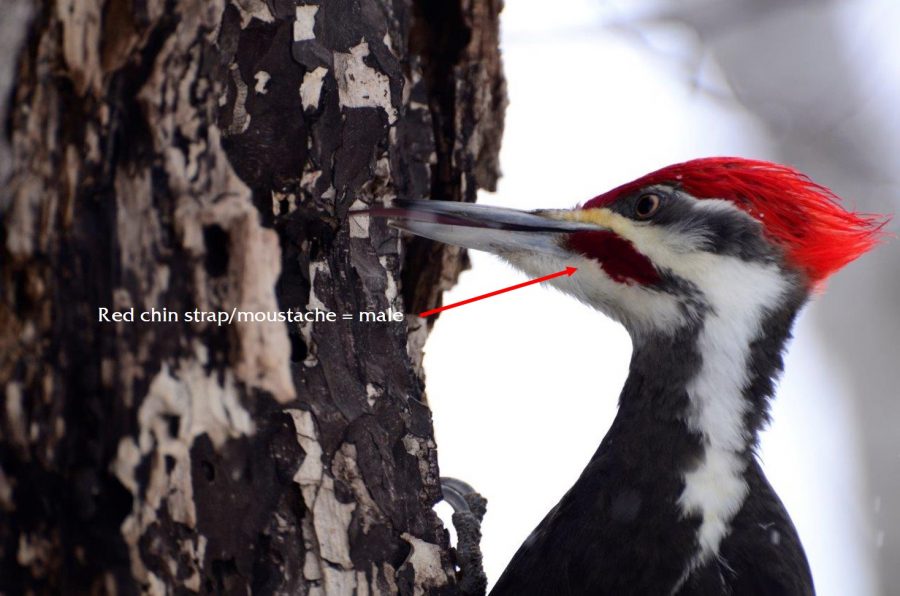
You’re ready for woodpecker-watching
You’ve got a couple key pointers to not only entice woodpeckers to a feeder for your viewing pleasure, but also some tips to identify three species and distinguish males from the females.
So set up your suet feeders and get ready to impress your friends. You just passed Woodpecker 101!
